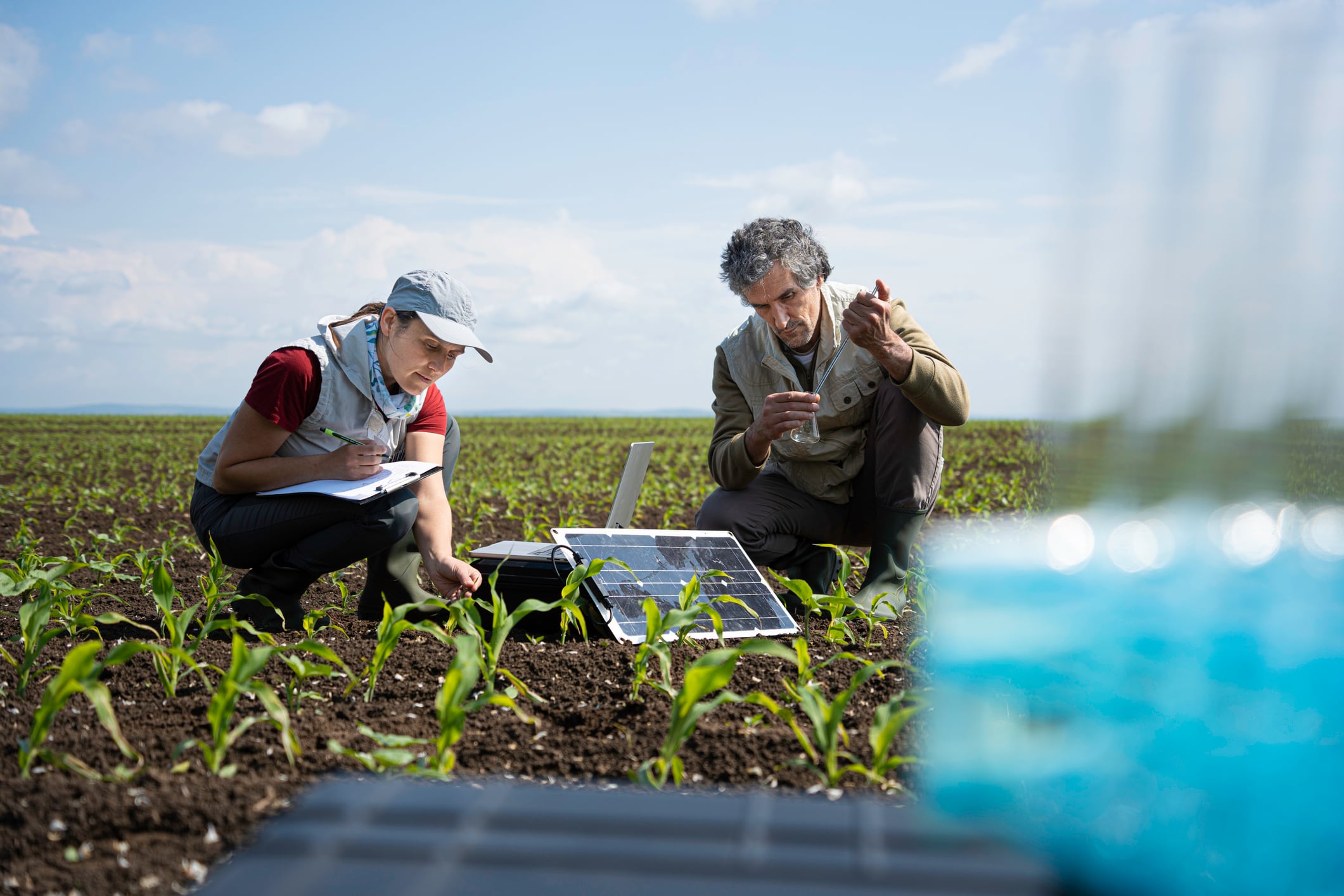No-till farming is widely considered ‘regenerative’ because it aligns with key regenerative agriculture principles: minimising soil disturbance, building soil health, sequestering carbon, conserving water, and supporting biodiversity.
The practice is now widely adopted in the US where it covers over 100 million acres.
Many agribusinesses and food companies including PepsiCo, Walmart and Unilever are actively supporting no-till farming as part of their broader regenerative agriculture and sustainability initiatives.
They’re seeking to protect their bottom line as climate change impacts crops; to hit sustainability targets; and to generate income with carbon credits. Bayer, for example, is actively paying farmers to adopt no-till as part of its regenerative agriculture programme, emphasising the environmental and economic benefits of reduced tillage.
But a new report from Friends of the Earth is highly critical of what it calls conventional no-till farming – especially when it is promoted as ‘regenerative’ agriculture.
The pesticide problem
No-till aims to preserve soil structure and reduce erosion by leaving the soil undisturbed. But this means that weeds are not mechanically removed, meaning farmers rely on chemical herbicides.
Friends of the Earth is unhappy with the trade-off. It maintains that no-till farming, as widely practiced, is not regenerative and instead perpetuates chemical dependency and environmental harm.
Based on analysis of US Department of Agriculture data, its report claims that most no-till systems are “so heavily dependent on toxic herbicides to manage weeds that a staggering one-third of the US’s total annual pesticide use can be attributed to no- and minimum-till corn and soy production alone”.
The report finds that the vast majority (93%) of acreage of the top two no- and minimum-till crops, corn and soy, use toxic herbicides, with glyphosate accounting for an estimated 40% of the total use of herbicides in no-till corn and soy.
Glyphosate, one of the most widely used herbicides, is highly controversial given its damage to waterways, soil ecology, and vital pollinators like bees. It is also linked to increased cancer rates and was declared a ‘probable carcinogen’ by the World Health Organization in 2015.
The environmental charity adds that the greenhouse gas emissions associated with the fossil-fuel-based synthetic pesticides and fertilisers used in no- and minimum-till corn and soy are equivalent to that of 11.4 million cars on the road over an entire year.
Further, the report argues that conventional no-till production does not increase soil carbon and in some cases has been found to reduce it.
“As regenerative agriculture takes center stage in national conversations about how to make America healthy, it’s crucial that we advance truly regenerative agriculture,” said Dr Kendra Klein, deputy director of science at Friends of the Earth. But conventional no-till “soaked in toxic” pesticides is “a step in the wrong direction,” she believes.
Sarah Starman, senior food and agriculture campaigner at the group, added that those major food companies investing in regenerative agriculture need to avoid “greenwashed” conventional no-till and instead support the transition to “legitimately regenerative agriculture that will protect soil health, human health — and their future bottom line”.
The Friends of the Earth report calls for a comprehensive transition away from chemical-intensive no-till, toward holistic, low-input, and ecologically sound farming systems, with robust policy and market support for farmers to make this shift.
Would a universally agreed definition of regen ag help?
The debate illustrates the pros and cons of regenerative agriculture’s blurry definition.
At present, it is not a specific practice, but rather a philosophy that uses a variety of techniques in combination. These might include practices like no-till farming; cover cropping and crop rotating; and integrating livestock.
Some, like brewing giant Carlsberg, believe an agreed definition would help avoid arguments as to what ‘true’ regenerative agriculture means, and help propel growth in the sector.
But imposing rigid universal standards would remove the flexibility that farmers currently enjoy to tailor their approach. This fluidity allows them to pick and choose from a complex bundle of ‘regenerative’ practices to make their operations more environmentally sustainable and profitable.
The Friends of the Earth report, for example, states that “truly regenerative agriculture cannot be boiled down to single practices”.
Another recent study of the evidence of the benefits of regenerative agriculture by the British Ecological Society (BES) also concludes that a ‘whole systems’ approach is needed to witness the benefits to soil health and biodiversity.
“There are five principles of regenerative agriculture but there’s no one principle that delivers clear change on its own,” said Dr Roy Neilson, soil ecologist at the James Hutton Institute and one of the lead authors of the report.
“To achieve meaningful change requires a good understanding of the context of the individual farming system. When possible, multiple principles ideally need to be adopted.”
By way of example, the BES study states that tillage is “not universally detrimental” to soil health and can be incorporated into regenerative farming systems. In contrast, organic farming relies on intense mechanical weeding to replace herbicides, which can have a “negative impact” on soils.
It adds there is no strong evidence on the benefits of reducing soil disturbance with no-till or minimum-till under UK conditions, despite its prominence as a principle of regenerative agriculture. Instead, it says there’s good evidence that integrating livestock into arable land benefits weed, disease and pest suppression.
Regenerative vs organic
A universal definition may also step on the toes of the organic sector – which already has legally binding certification standards – and further confuse consumers about the differences between the two practices.
Dr Andrew Smith, chief scientific officer at Rodale Institute – which supports research into organic farming – told AgTechNavigator: “Since regeneration and regenerative is a concept of continuous improvement, a definition would actually be antithetical to the idea of regenerative.
“Because we never should arrive at an endpoint. Certification exists: the Regenerative Organic Certification developed by the Regenerative Organic Alliance.”
Will the debate boost the biologicals sector?
Finally, could the debate help propel the biologicals sector? Bioherbicides (or weed control agents derived from living organisms or natural products) are not yet deemed a complete replacement in most large-scale agricultural systems.
But biologicals are showing strong growth and adoption in Latin America, driven by factors like government support. The Argentine No-Till Farmers Association (Aapresid) says it actively promotes the integration and discussion of biologicals within sustainable agriculture and the use of biologicals as alternatives or complements to conventional agrochemical.
Asked if no-till farming could be regarded as ‘truly’ regenerative if weed control agents derived from living organisms or natural products were effective and affordable, Smith responded: “Maybe. Living organisms can be invasive in the wrong place and even natural products that may degrade faster than synthetic products can accumulate in the environment and be toxic.
“So just because it is natural doesn’t mean it is good.”





